by Lorri | Sep 7, 2011 | UnCorked
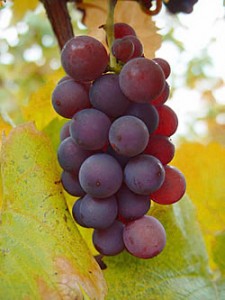 In California vineyards, a rising star is joining two classic dry whites. Chardonnay and sauvignon blanc have long been the most popular wines in America but the new marvel is pinot grigio (sometimes called pinot gris).
In California vineyards, a rising star is joining two classic dry whites. Chardonnay and sauvignon blanc have long been the most popular wines in America but the new marvel is pinot grigio (sometimes called pinot gris).
In the past decade, California has seen plantings more than quadruple — from around 2,500 acres in 2000 to almost 13,000 in 2010. That’s a lot of producers banking on the popularity of this charming yet undemanding grape.
Over the years, Americans began turning to pinot grigio to satisfy the desire for a white wine that is not as rich and oaky as chardonnay but a little softer and fruitier than sauvignon blanc. Pinot grigio fits this bill perfectly with its gamut of flavors and variety of styles.
The versatile grape will grow almost anywhere, but the cooler coastal regions of California are ideal. The cool growing season produces a wine that showcases the zesty acidity that is the hallmark of its clean, crisp style.
Even with summer winding down and the flavors of our hearty reds around the corner, there’s still time for a refreshing engagement with this delightful grape.
THE VALUES
- 2010 Mirassou Winery Pinot Grigio, California (about $13 retail)
- 2010 Beringer Founders’ Estate Pinot Grigio, California (about $12 retail)
- 2010 Concannon Vineyards Pinot Grigio, California (about $12 retail)
- 2010 Tamas Estates Pinot Grigio, California (about $12 retail)
- 2010 Cupcake Vineyards Pinot Grigio, California (about $10 retail)
THE SPLURGES
- 2010 Sterling Vineyards Vintner’s Collection Pinot Grigio, California (about $16 retail)
- 2009 MacMurray Ranch Sonoma Coast Pinot Gris, California (about $28 retail)
- 2010 Swanson Vineyards Pinot Grigio, California (about $26 retail)
- 2010 Coppola Diamond Pinot Grigio, California (about $16 retail)
by Lorri | Aug 31, 2011 | UnCorked
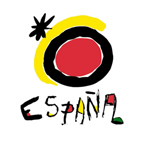 Rooted in centuries of tradition, Spain is a country with diverse and distinctive wines, including an exciting array with excellent value.
Rooted in centuries of tradition, Spain is a country with diverse and distinctive wines, including an exciting array with excellent value.
The Spanish government guarantees the authenticity of its wine by designating each with a region of origin or Denominacion de Origen (D.O.). The laws behind these distinctions define the location, grape used, maximum yields allowed, aging requirements in bottle and barrel and alcohol content. More than 60 wine regions have unique designations offering a world of diversity for the wine drinker.
SPARKLING
Spanish cava had been produced in the Penedes region of Catalonia since the late 19th century using the same winemaking method as the honored Champagne but with indigenous grapes. The resulting wine is a fresh bubbly at half the price of many inexpensive Champagnes.
THE VALUE
- NV Segura Viudas Brut Reserva, Spain (about $12 retail)
THE SPLURGE
- NV Sumarroca Cava Brut, Spain (about $19 retail)
WHITE
Albarino is stealing the limelight for white wine around the world. It is produced and grown in the northwest corner of Spain in the Rias Baixas region, which is cooler than other regions in the country and contributes to the crisp, fragrant characteristics of this wine.
THE VALUE
- 2010 La Cana Albarino, Spain (about $16 retail)
THE SPLURGE
- 2009 Abadia San Campio Albarino, Spain (about $25 retail)
ROSE
The Rioja region, known the world over for its red wines, produces several distinct dry roses, which beg to be discovered.
THE VALUE
- 2010 Rene Barbier Rose, Spain (about $10 retail)
THE SPLURGE
- 2010 Marques de Caceres Rioja Rose, Spain (about $14 retail)
RED
Rioja is the most recognized of Spain’s red wines. In recent years, the region has experienced tremendous growth due mostly to the production of exceptional wines offered at a reasonable price. These wines are produced from the tempranillo grape and are fresh, fruity, robust and complex.
THE VALUE
- 2008 Campo Viejo Rioja Crianza, Spain (about $13 retail)
THE SPLURGE
- 2008 Condesa de Leganza Crianza, Spain (about $18 retail)
SHERRY
Often overlooked or discounted due to its undeserved reputation as low in quality and overly sweet, Spanish sherry deserves a second look. Today, Spanish producers are bottling some of the most luscious, rich and smooth sweet wines in the world.
THE VALUE
- Dry Sack 15 Year Old Sherry, Spain (about $30 retail)
THE SPLURGE
- Fernando de Castilla Oloroso Sherry, Spain (about $40 retail)
by Lorri | Aug 24, 2011 | UnCorked
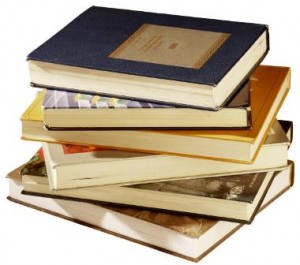 As with wine, I believe books written about wine also have a shelf life. Some age well, and others don’t. Being a wine geek, most of my reading involves, as you guessed, books written about wine. I love flipping through my old books, one favorite being a used copy of Wines of The World, an immense and progressive book, for the time it was printed in the late 1960s.
As with wine, I believe books written about wine also have a shelf life. Some age well, and others don’t. Being a wine geek, most of my reading involves, as you guessed, books written about wine. I love flipping through my old books, one favorite being a used copy of Wines of The World, an immense and progressive book, for the time it was printed in the late 1960s.
But much has changed in the international world of wine.
Books written 40 years ago were generally intimidating and overwhelming, even for the connoisseur. But with today’s selections there are no excuses not to delve into the wine books awaiting your exploration.
Here are a few of my favorites:
Wine All-in-One for Dummies by Ed McCarthy, Mary Ewing-Mulligan and Maryann Egan (For Dummies, $20). This book is ideal for anyone beginning their exploration, those starting with zero knowledge of wine or those who know a little but want to learn and need a starting point. It helps readers decode the complex variety of grapes, includes information on wine regions and answers beginners’ questions on all aspects of wine. It’s approachable and not overly technical, making it an easy place to begin your exploration.
The Oxford Companion to Wine by Jancis Robinson (Oxford University Press, $60). Every wine lover’s bookshelf should have a copy of this book. I referred to my personal copy so many times the spine and cover tore off my first edition; fortunately, it was just in time for the second edition printing. Now in its third edition, this book is recognized as the authoritative guide, covering every aspect of wine and winemaking, including in-depth analysis of the vast range of wines available around the world. If you add only one book to your collection it should be this one.
Napa Valley: The Land, The Wine, The People by Charles O’Rear and Daphne Larkin (Wineviews Publishing, $45). Napa Valley was bestowed an honor with O’Rear as the photographer behind this stunning book. I recommend it for anyone searching for an indulgence of the senses. It’s a photographic journey through one of the world’s most amazing wine regions. O’Rear, a former National Geographic photographer, has been documenting the area since 1978. Today he owns the largest collection of wine-related photos in the United States. His most famous — and probably most viewed in the world — is Bliss, the default Microsoft wallpaper on a billion computers around the world, according to the publisher.
Bordeaux: People, Power and Politics by Stephen Brook (Mitchell Beazley, $15). Becoming more difficult to find, this is still one of my favorite wine books in my library. It’s like a wine-culture book and a spy and romance novel all wrapped into one. This unique exploration into Bordeaux’s wine trade goes behind the scenes to discover how the region’s wines are produced, marketed and sold, revealing an intriguing look into the power of the press, merchants and consumers over prices and wine culture.
by Lorri | Aug 17, 2011 | UnCorked
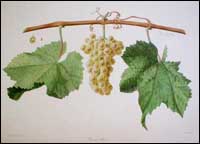 I am first to admit I was one of the many who turned my back on chardonnay in the last several years. It was never my intention but I was trapped in the monotony of predictable styles and flavor. However, a few weeks ago my palate was offered a revival of sorts, with a spectacular French Burgundy. I took to exploring this chameleon of a grape hoping to renew my expectations and once again became a fan of chardonnay.
I am first to admit I was one of the many who turned my back on chardonnay in the last several years. It was never my intention but I was trapped in the monotony of predictable styles and flavor. However, a few weeks ago my palate was offered a revival of sorts, with a spectacular French Burgundy. I took to exploring this chameleon of a grape hoping to renew my expectations and once again became a fan of chardonnay.
FRANCE
Chardonnay’s character is often obscured by the use of oak but France’s Cote d’Or seems to have perfected the balancing act. If you enjoy the rich, soft, creamy side of this grape look to wines from this region. But if you enjoy chardonnay without the oak consider French Chablis, a classic dry white wine of north Burgundy. French Chablis is an elegant, dry, crisp wine, unlike other chardonnays most people have tasted, with subtle light mineral and apple flavors.
THE VALUE
- 2009 Joseph Drouhin Vaudon Chablis, France (about $26 retail)
THE SPLURGE
- 2007 Joseph Drouhin Puligny Montrachet, France (about $76 retail)
UNITED STATES
California’s Carneros region stands apart from the others with significant variations in growing this grape. Winds sweep over Carneros every afternoon, allowing a slow ripening in the vineyard resulting in lean, crisp wines. The climate has a lot to do with the elegance of Carneros wines, but a great deal is owed to the winemakers once the grapes are in their hands.
THE VALUE
- 2009 Acacia Chardonnay, California (about $24 retail)
THE SPLURGE
- 2009 Rombauer Carneros Chardonnay, California (about $38 retail)
AUSTRALIA
Given the sheer size of Australian wine country, it isn’t surprising that Australia chardonnay ranges from perfection to average. But the best chardonnays can be found around the town of Margaret River and in South Australia. These cooler regions produce wines that are soft, creamy and buttery with chardonnays’ balance of melon and tropical fruit flavors. The warm regions are generally where the fullbodied, high alcohol “fruit bomb” styles show up.
THE VALUE
- 2009 Grant Burge Chardonnay, Australia (about $18 retail)
THE SPLURGE
- 2009 Leeuwin Estate Prelude Chardonnay , Australia (about $49 retail)
by Lorri | Aug 10, 2011 | UnCorked
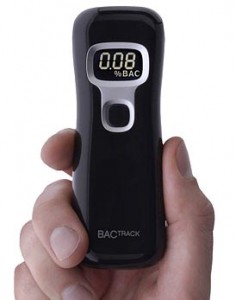 Wines with high alcohol (13 percent or higher) content have become increasingly popular in the past decade.
Wines with high alcohol (13 percent or higher) content have become increasingly popular in the past decade.
Their popularity, in part, is due to the high scores the wines receive from critics. Many times wines being reviewed are among hundreds tasted blindly. Of course when the powerhouse high alcohol wines hit the fatigued palate of a taster they generally will stand out in the sea of bottles.
Naturally, with these great accolades from reviews many wineries kept in step with the trend and continued producing higher alcohol vintages. By letting grapes stay on the vine longer, the sugar content is higher. It’s the sugar, which converts to alcohol during fermentation, that is responsible for the higher alcohol percentage.
These high-alcohol wines are frequently included on restaurant wine lists. While a 3 percent increase in alcohol content may not seem like a large difference, your blood alcohol level and your taste buds will surely react. High-alcohol wine can overpower the flavors of food and accentuate the spiciness of bold foods.
And as for what it does to your brain, many studies are technical in their description. My favorite is by writer and retired physician William “Rusty” Gaffney.
He took a Breathalyzer test after drinking low- and high-alcohol wines. The 5-foot-9-inch, 178-pound Gaffney found that after two glasses of 12 1/2 percent alcohol wine on an empty stomach in one hour, his blood alcohol was 0.05. After two glasses of 15 percent wine, he was over the legal driving limit of 0.08 after an hour.
So, you may want to forgo the food clash and alcohol content by considering these lower alcohol wines for your lunchtime menu.
THE VALUES
- 2009 Whitehall Lane Sauvignon Blanc, California (about $16 retail)
- 2010 Broadbent Vinho Verde, Portugal (about $10 retail)
- 2010 Conte Stella Rosa Imperiale Moscato, Italy (about $19 retail)
- 2010 Helfrich Pinot Gris Vin d’Alsace, France (about $18 retail)
THE SPLURGES
- 2010 Pascal Jolivet “Attitude” Sauvignon Blanc, France (about $22 retail)
- 2009 Oriel Or tolan Falkenstein Gruner Veltliner, Austria (about $25 retail)
- NV Roederer Sparkling Wine, California (about $35 retail)
by Lorri | Aug 3, 2011 | UnCorked
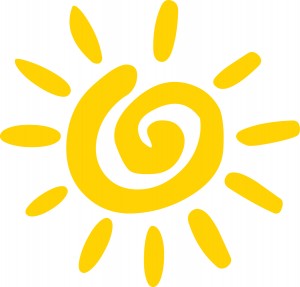 This time of year Uncorked seems to have a recurring theme: what to drink in the sweltering summer heat. The urge may be to skip the wine and reach for an icecold hoppy beer, but that’s not the only way. There are plenty of wines fit for summer if you’re willing to look beyond heavy reds. Here are a few to cool off your summer shopping list.
This time of year Uncorked seems to have a recurring theme: what to drink in the sweltering summer heat. The urge may be to skip the wine and reach for an icecold hoppy beer, but that’s not the only way. There are plenty of wines fit for summer if you’re willing to look beyond heavy reds. Here are a few to cool off your summer shopping list.
THE VALUES
- 2010 Folonari Pinot Grigio, Italy (about $12 retail)
- 2010 Big House White Blend, California (about $10 retail)
- 2010 Lindeman’s Bin 77 Semillon–Chardonnay, Australia (about $9 retail)
- 2009 Delicato Pinot Grigio, California (about $8 retail)
- 2009 Penfolds Koonunga Hill Chardonnay, Australia (about $15 retail)
THE SPLURGES
- 2009 Wente Vineyard Estate Sauvignon Blanc, California (about $17 retail)
- 2009 Rutherford Ranch Chardonnay, California (about $19 retail)
- 2009 Sineann Pinot Gris, Oregon (about $24 retail)
- 2009 Pascal Jolivet Attitude Sauvignon Blanc, France (about $25 retail)
- 2009 Chateau St. Jean Sonoma Pinot Noir, California (about $39 retail)
 In California vineyards, a rising star is joining two classic dry whites. Chardonnay and sauvignon blanc have long been the most popular wines in America but the new marvel is pinot grigio (sometimes called pinot gris).
In California vineyards, a rising star is joining two classic dry whites. Chardonnay and sauvignon blanc have long been the most popular wines in America but the new marvel is pinot grigio (sometimes called pinot gris). Rooted in centuries of tradition, Spain is a country with diverse and distinctive wines, including an exciting array with excellent value.
Rooted in centuries of tradition, Spain is a country with diverse and distinctive wines, including an exciting array with excellent value. As with wine, I believe books written about wine also have a shelf life. Some age well, and others don’t. Being a wine geek, most of my reading involves, as you guessed, books written about wine. I love flipping through my old books, one favorite being a used copy of Wines of The World, an immense and progressive book, for the time it was printed in the late 1960s.
As with wine, I believe books written about wine also have a shelf life. Some age well, and others don’t. Being a wine geek, most of my reading involves, as you guessed, books written about wine. I love flipping through my old books, one favorite being a used copy of Wines of The World, an immense and progressive book, for the time it was printed in the late 1960s. I am first to admit I was one of the many who turned my back on chardonnay in the last several years. It was never my intention but I was trapped in the monotony of predictable styles and flavor. However, a few weeks ago my palate was offered a revival of sorts, with a spectacular French Burgundy. I took to exploring this chameleon of a grape hoping to renew my expectations and once again became a fan of chardonnay.
I am first to admit I was one of the many who turned my back on chardonnay in the last several years. It was never my intention but I was trapped in the monotony of predictable styles and flavor. However, a few weeks ago my palate was offered a revival of sorts, with a spectacular French Burgundy. I took to exploring this chameleon of a grape hoping to renew my expectations and once again became a fan of chardonnay. Wines with high alcohol (13 percent or higher) content have become increasingly popular in the past decade.
Wines with high alcohol (13 percent or higher) content have become increasingly popular in the past decade. This time of year Uncorked seems to have a recurring theme: what to drink in the sweltering summer heat. The urge may be to skip the wine and reach for an icecold hoppy beer, but that’s not the only way. There are plenty of wines fit for summer if you’re willing to look beyond heavy reds. Here are a few to cool off your summer shopping list.
This time of year Uncorked seems to have a recurring theme: what to drink in the sweltering summer heat. The urge may be to skip the wine and reach for an icecold hoppy beer, but that’s not the only way. There are plenty of wines fit for summer if you’re willing to look beyond heavy reds. Here are a few to cool off your summer shopping list.